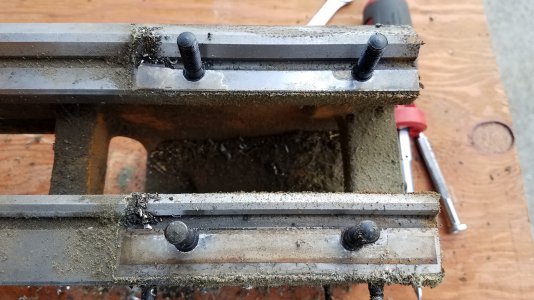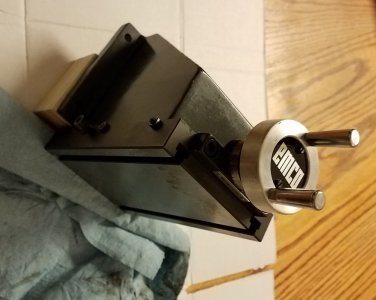A fellow was unloading an estate north of Philadelphia and selling an Emco Compact 8 with numerous accessories, so I placed a deposit and took my chances.
I had no helpers at home, so I had to break it down in pieces to get it in the house. Below the headstock there was what appeared to be waxed paper shims between the bed and headstock castings.

Is the paper placed there just to keep the parts from rusting together? One was torn on disassembly, and the other scraped off in pieces.
They measured out at about 0.003 inch. I have some Kapton tape about the same size. Any issues with using this tape? I'm guessing it will scrape off OK if it becomes a problem.
The Compact 8 is a nice little bench top machine. It came with a vertical milling slide that I thought was broken. Turns out it was frozen up near the dial with dried oil. Never been used, I guess.
Happy New Year!
TomKro
I had no helpers at home, so I had to break it down in pieces to get it in the house. Below the headstock there was what appeared to be waxed paper shims between the bed and headstock castings.

Is the paper placed there just to keep the parts from rusting together? One was torn on disassembly, and the other scraped off in pieces.
They measured out at about 0.003 inch. I have some Kapton tape about the same size. Any issues with using this tape? I'm guessing it will scrape off OK if it becomes a problem.
The Compact 8 is a nice little bench top machine. It came with a vertical milling slide that I thought was broken. Turns out it was frozen up near the dial with dried oil. Never been used, I guess.
Happy New Year!
TomKro


